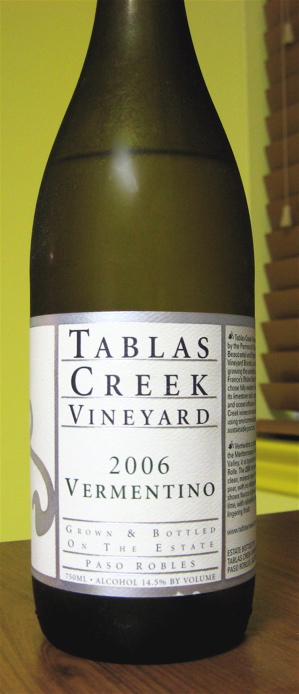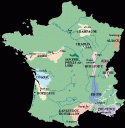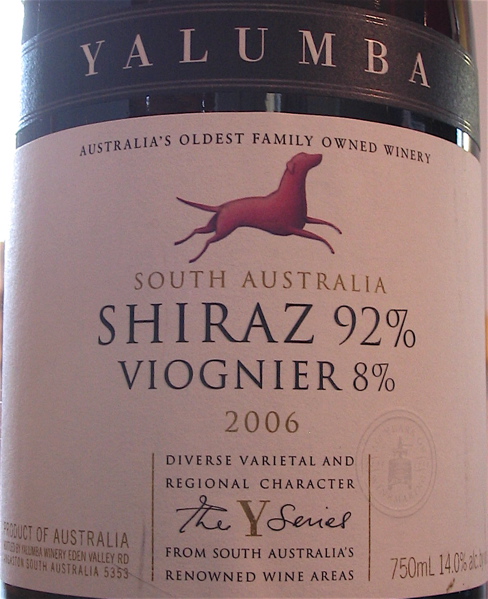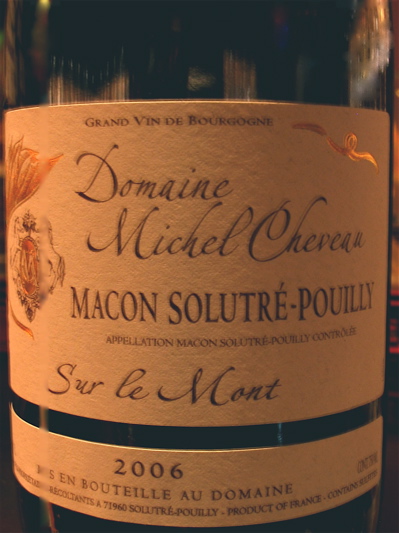I got a Tablas Creek VINsider club membership for Xmas from my beloved this year, and couldn’t resist opening one bottle of the six right away, because I’m undisciplined like that.
 Pale straw in color. Very, very green on the nose, with a slight copper penny whiff of mineral, and lots of lime zest and honeydew melon.
Pale straw in color. Very, very green on the nose, with a slight copper penny whiff of mineral, and lots of lime zest and honeydew melon.
Lovely minerality and acid on the palate, with prickles on the sides of my tongue. Delicate herbal flavors of chive and thyme, with lemon/lime-coated honeydew and green apple. Exceptionally refreshing and well-balanced. A great quencher of a wine, with lots of style. Yum.
Tablas Creek Vineyards was founded in California’s Paso Robles region by the Perrin family, famous winemakers of Chateau de Beaucastel, the iconic Chateauneuf de Pape, as well as other great Rhone wines, and Robert Haas, a highly influential American importer. They imported all their vines from the Rhone, and all of their wines are made from estate-grown fruit. They also farm organically and have a minimalistic approach to winemaking, meaning they try to fiddle with the wine to the least amount possible. General Manager Jason Haas has a blog, and posts interesting stuff a couple times a week on average.
The grape Vermentino is best known as an Italian varietal, grown all over the country but with distinction in Tuscany, Liguria and Sardinia. It’s thought to have been brought over from Spain in the Middle Ages. In southern France, the same grape is called Rolle, and vinified in Provence and Corsica, the latter of which is really well-known for its great Vermentino-based wines.
When Tablas Creek was purchasing vines from the Perrin’s source in France to import to America and grow in Paso Robles, the nurseryman recommended that they also purchase some Vermentino, as he thought it would thrive in the rocky, limestone-rich soils (which makes me wish some Hill Country winery would plant them some Vermentino. Spicewood Vineyards? Are you listening?).
Tablas Creek originally tried to blend the Vermentino into their other whites, but the wine was so distinctive that they ended up bottling it by itself. They bottle all their Vermentino with a Stelvin closure (which is a fancy kind of screwcap). The minerality makes it a great pairing for shellfish and the citrus and herbal qualities make it a natural for Mediterranean cuisine as well. A little pricey at $21 or so, the wine was impressively well-made and it was interesting to taste a US Vermentino, for sure. If you’re into obscure varietals and you don’t mind plunking $20+ for a light, refreshing, sporty white, this is your bottle fa shizz.






